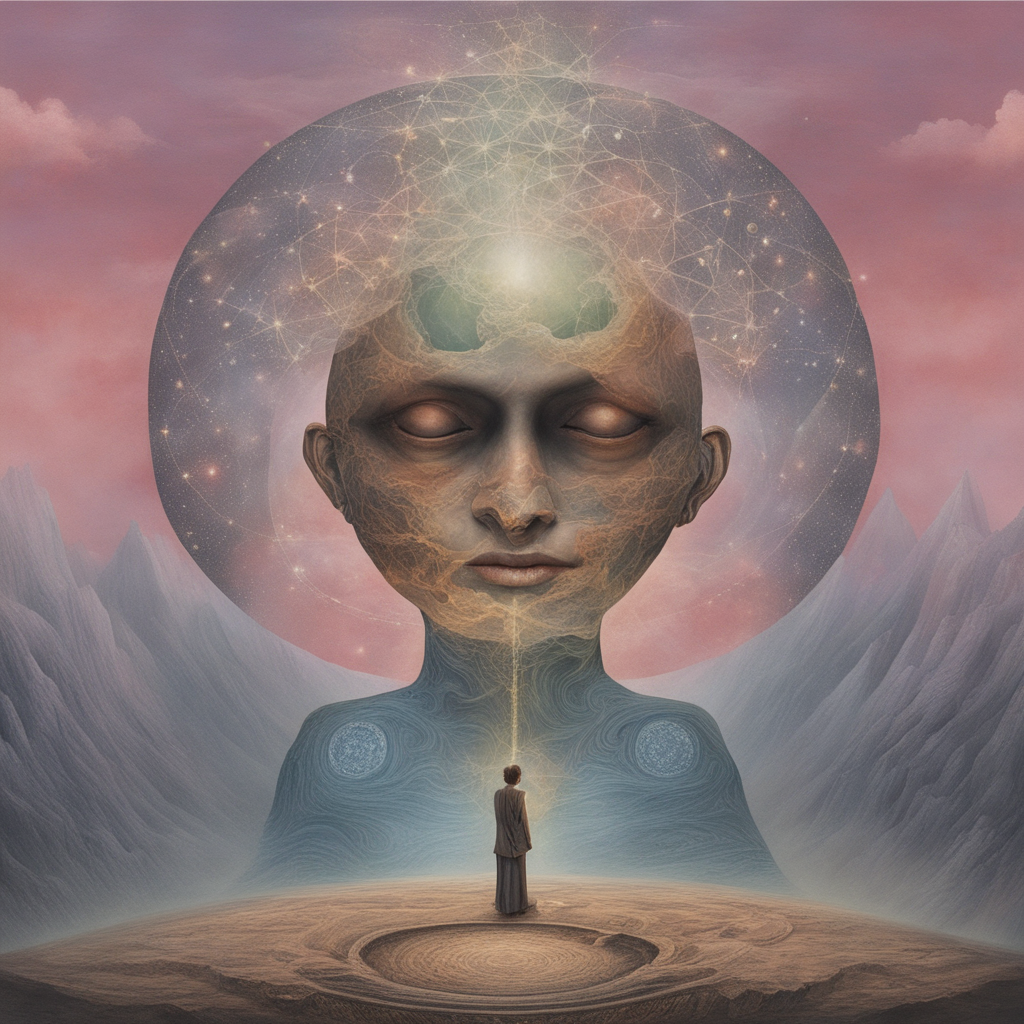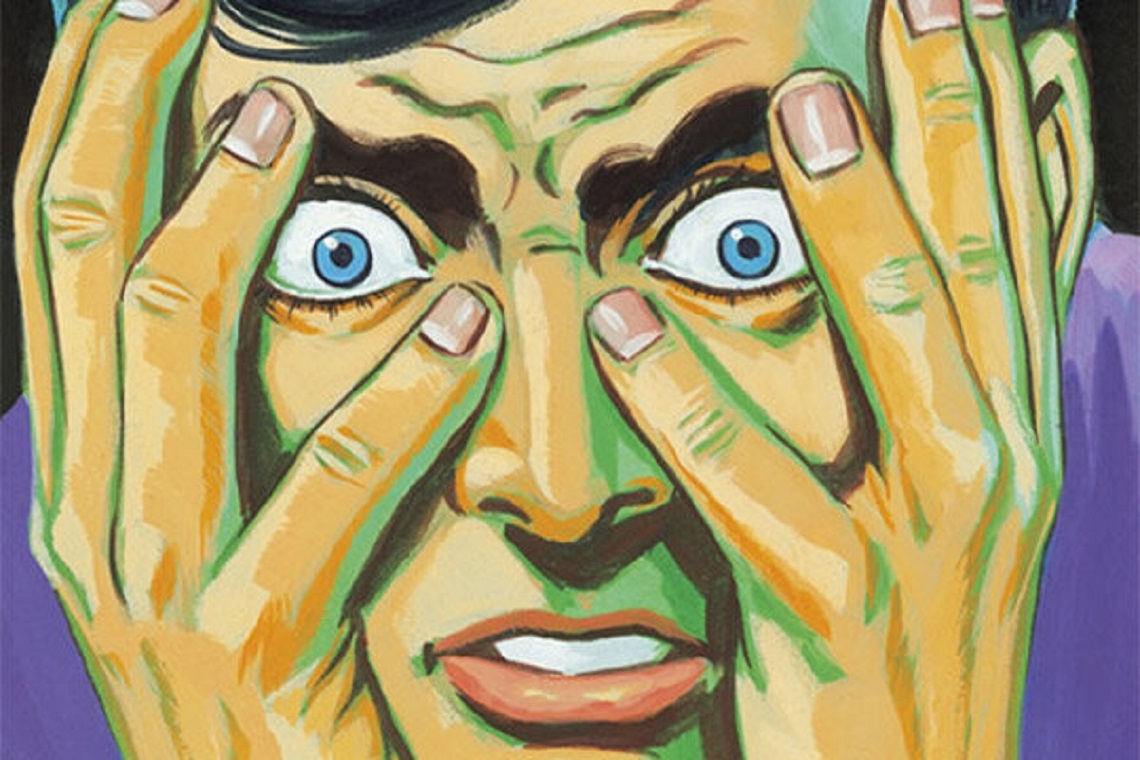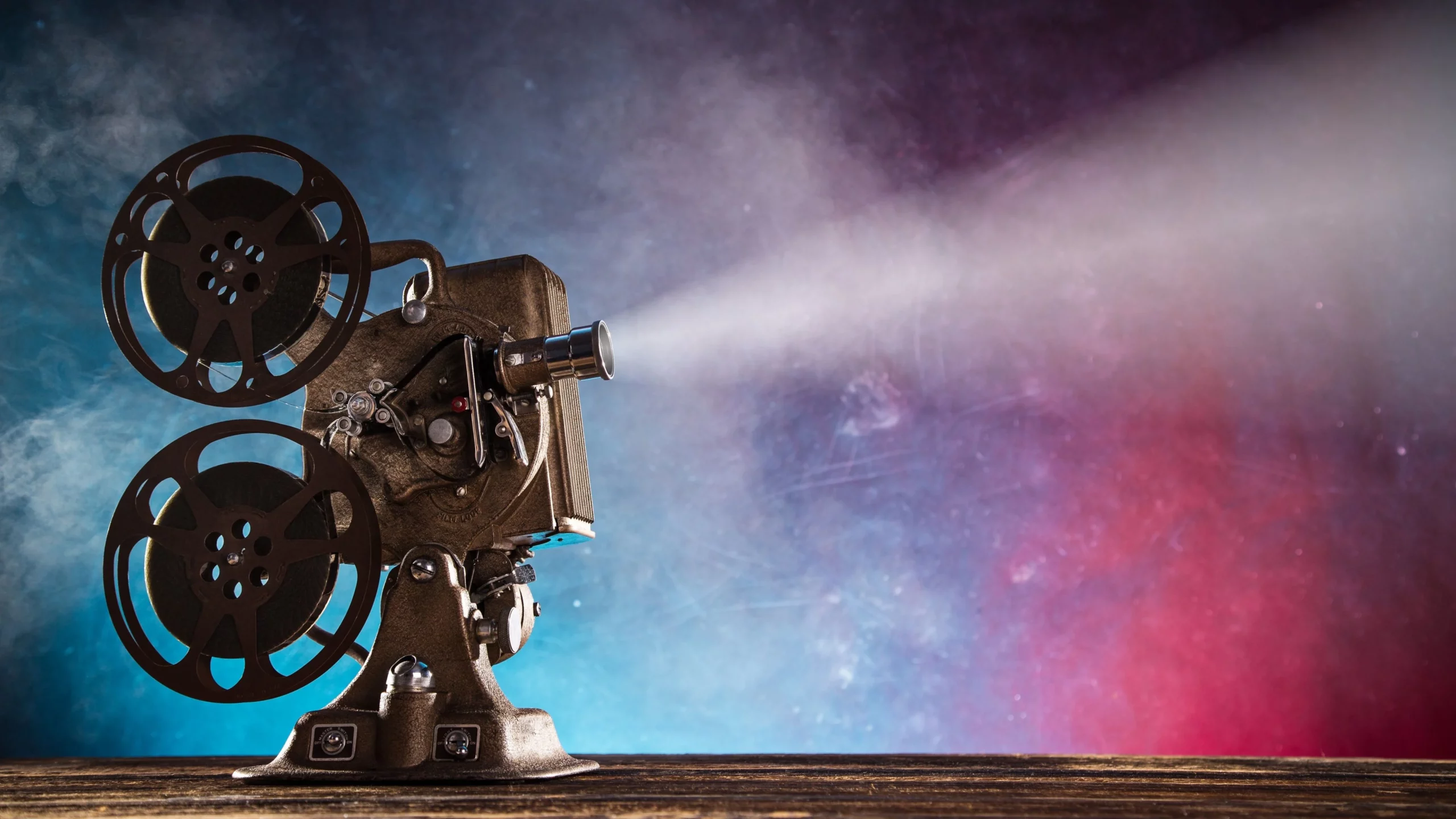As I normally am, I can only ever see the world in terms of myself and this – of course – is something of an obstacle. Or rather it’s not just ‘a bit of an obstacle’, it’s an absolute one. It’s one we can’t get past, one that we don’t get past. Seeing the world in terms of myself means that I am not seeing the world, it means that I can’t see the world.
I can’t see the world, but I don’t know that I can’t – all I can see on my own ideas (which I don’t recognise as my own ideas) reflected back at me. I’m not seeing the world, and I’m not recognising the action of my own mind either, which puts me in a thoroughly unreal place. As Bodhidharma says, “If you use your mind to study reality, you won’t understand either your mind or reality”. This isn’t some rare pathological condition that we’re looking at here either, this is ‘life as we know it’, this is our everyday state of being.
Our situation here is a deeply conflicted one – on the one hand there’s something deep inside us that wants no truck with illusions (which are of course no good to anybody), whilst on the other hand there is something else in us which is completely addicted to illusions, which cannot do without them. There is the part of us which has integrity, and values truth over all things, and there is the part that has no integrity, the part of us that has been corrupted by ‘the dirty devices of this world‘ (as Thomas Traherne puts it). For the most part, it is the addict in us that rules the roost of course, with the result that we never even come anywhere close to suspecting what’s going on. All we ever know are illusions, only we don’t see them as such…
The reason we are addicted to illusions isn’t because there’s anything good in them (there’s nothing good in in an illusion, any more than there is something bad in it, illusions being – at the end of the day – no more than illusions) but they are of value to us all the same because being immersed in them (in the way we are) saves us from having to come face-to-face with the truth. An illusion – we might say – is made up of ‘two self-cancelling halves’: there is the hopeful half (in which we pleasurably anticipate gaining some wonderful value), and there is despairing half (the half in which we pay back which we had what we had counted ours too soon). What else would we expect from an illusion, after all, other than this self-cancelling ‘double act’?
There is no net gain here therefore, only ‘pleasure that is inevitably going to be followed by pain’, only ‘hope that is always followed by despair’. And yet there is nevertheless – as we have just said – a gain of sorts. There is a gain of sorts because we have obtained a certain amount of distraction out of the whole affair. With a continuous supply of illusions, we can obtain ‘the boon of continuous distraction’, and this is of great value to us if our ‘Number 1 Aim In Life’ is to avoid seeing the truth. If all we really care about is steering clear of the truth at any price, then this explains our full-blown addiction to illusion, our full-blown addiction to distraction.
Where does our fear of seeing the truth come from, however? What is it, we might ask – deliberately taking a naive stance on this matter – that could possibly be so very terrible about ‘the truth’? This is a naive question because (as we all know if we are 100% honest with ourselves, which is far from being a given) the hardest thing in life is – without any doubt – facing the truth head on without resorting to self-deception to cushion the blow. The willingness to see the truth, however painful, is the making of us, whilst the stubborn unwillingness to do so is our undoing.
Given the choice, almost all of us would opt for a comforting lie as opposed to a challenging truth; to look for ‘the easy way out’ is the default setting as far as the psychology of the everyday mechanical self is concerned. This is why Jung makes the point that none of us will ever change unless ‘our backs are against the wall’ and we really have no other option (since none of the sneaky tricks we usually rely on work anymore). This is why genuine psychological growth is such a rare thing in the present day – because there is no growth without pain, because growth is pain, and because of our disinclination to do the hard thing we opt for adaptation instead. We automatically adapt ourselves to our comforting lies so that these lies become invisible to us.
If we go back to what we started off by saying – I do not see the world for what it is in itself, but only in terms of what I make of it myself, only in terms of ‘my own un-owned projections’. This is another way of saying that our core assumptions are never challenged, since the Projected World is nothing other than ‘our core assumptions reflected back at us, in disguised form’. When our assumptions are reflected back at us then – naturally enough – this means that we are never going to come across anything that is going to be radically unexpected. We will still experience ‘surprise’, but only in trivial things, only in the most banal or superficial way…
Trivial uncertainty serves to relieve the boredom of living in a world that is made-up of our own recycled expectations, so we don’t mind that. We actually need it – trivial uncertainty equals ‘entertainment’ (which is another way of talking about our ‘addiction to illusion’) but real surprise is something that we absolutely don’t want (hence the fact that we have, in the developed world, replaced life with scripted entertainment. A simple way to explain this is to say that we have become comfortable, and when ‘being comfortable’ is our main aim in life then anything that rocks the boat becomes an evil to be eliminated. ‘Radical surprise’ becomes Public Enemy No. 1, and this is why we opt for the regulated life despite the appalling tedium that this inevitably entails.
The addiction to comfort runs far deeper than we might imagine however – comfort (or ‘having our own expectations reflected faithfully back at us on all sides’) isn’t an option that we can take or leave, it’s like oxygen to us, it is something we simply can’t do without. We can’t do without the Projected World, terminally dull (not to mention hideously oppressive) as it may be. We can’t do without the ‘System’ that thought has put in place for us, no matter how cruelly restrictive (or ‘sterile’) that system might be. It is a cruel master perhaps, but we because we need so badly what it has to offer we will put up with it. This is – of course – always the way with addictions – the price we pay is terrible, but we pay it all the same. We will keep on paying it til the bitter end.
If instead of seeing the world that is made up of ‘our own recycled expectations’ we were to somehow encounter the world that hasn’t been made, the unconditioned or unproduced reality, then this would turn everything on its head. When actual awareness comes into the picture (God forbid!) then this derails the system in a big way. Were I to bring awareness to bear, then the first thing I would notice would be the fakeness of everything, the unholy stink of everything. We would start to smell a rat, we would start to sense that there is something dodgy going on. Sensing that there is some sort of conspiracy afoot doesn’t necessarily mean that we have ‘lost it’ and are in urgent need of psychiatric help therefore – it is actually a symptom of actual consciousness (as opposed to the tame, conditioned version of it). We don’t generally get very far with this uncomfortable awareness however since – as a rule – we don’t investigate what’s going on in a psychological way but – rather – opt to believe in some sort of crackpot theory to account for it, when yet another theory is the very last thing we need. The Thinking Mind – the Arch-Deceiver – is the one thing we don’t need to be involved here…
The task – as Jung tells us – is to recognise our own projections. We then see that it’s not the world that we’re looking at but our own ideas, ‘a reflection of our own unknown face’, as Jung says. This is only the beginning of our journey, so to speak – the plot thickness from this point as we start to realize that the deception goes deeper than we thought. Since the only way we are able to ‘take ourselves for granted’ in the comfortable way that we do is because we don’t recognise the Projected World for what it is (i.e., the reflection of our own unknown face) we start to lose not just some of the ground we thought we had, but all of it. To take an interest in ‘unconditioned reality’ (which is to say, ‘reality as it is in itself’) isn’t just uncomfortable for ‘the self we think we are’, it’s lethal. It’s ‘lethal’ because to ‘recognise our projections’ is ‘to recognise a tautological loop of logic as being tautological’, and that means that we no longer have anywhere to hide from reality. By making the mistake of ‘being curious about reality’, we’ve done ourselves out of our hiding place! The result of seeing that the projected world isn’t a world at all uncouples us from ‘the loop that we didn’t see to be a loop’ and what we’re faced with then is freedom – which is exactly the thing we’ve been trying to avoid all this time.
‘Life as we know it’ isn’t life – it’s just ‘a projected surface’. It’s the superficial appearance of freedom as experienced by an imaginary or virtual entity, a ‘projected entity’ that isn’t really there. The only reason the projected entity (the ego or self-image) seems solid and substantial to us is – as we keep saying – because we make sure only to pay attention to ‘information’ that confirms our unreal assumptions. The only reason the ego seems real to us is because we ‘make sure only ever to relate to our projections’. ‘Relating to our projections’ doesn’t that we are genuinely relating to anything – there’s no actual relating involved here, only ‘mechanical reacting’ and when we mechanically react to a trigger, all we’re doing is ‘continuing’ or ‘extending’ the logic that the trigger is based on. We’re continuing or extending the Continuum of Thought, which means that we’re ‘handing over our autonomy to the ‘Mind-Created Virtual Reality’ (which is the Dimension of Slavery, which the Dimension of Mechanical Bondage, which is ‘life as we know it’).
Image – thetatooedbuddha.com






